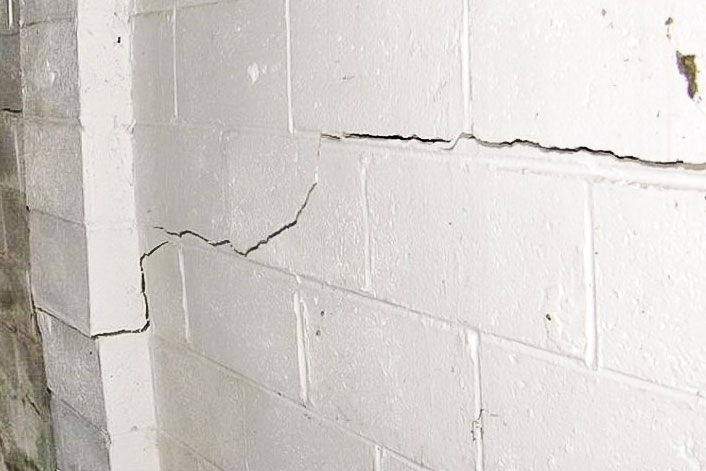We’re a water basement treatment company, so we’ve seen how improper drainage can cause major damage to your home’s foundation — it ain’t pretty. For you and I, water equals life. For your home’s foundation, water equals a slow, painful death. Every heavy rainstorm that hits, every winter that thaws, and every excitable gardener who overwaters their plants poses a threat unless you have the proper water removal systems in place. If not, then let us explain to you why it might be a good idea to implement some.
Introducing Hydrostatic Pressure
“Hydrostatic” is just a ten-dollar word to just describe still water. So “hydrostatic pressure” is the force that still water exerts onto the foundation of your home. How strong is it? Well, water is heavier than you might think! One cubic metre of water weighs a ton. A ton. That’s 2000 pounds. We can both agree that even after an average rainfall, significantly more than one cubic metre of water falls in the area around your home. That’s a lot of water weight pushing against your foundation. Over time, mixed with other conditions, that water will find a way to infiltrate your home.
Soil Spoils
The soil around your home plays a huge role in ruining your foundation’s day. When soil gets wet, it soaks it up like a sponge and expands. This expansion puts pressure on your foundation as it tries to take up space it doesn’t have. Vice versa, when soil gets really dry, it shrinks, pulling away from your concrete foundation. This is a problem since soil acts as a load bearing system for your foundation. Your foundation loves to have the support of soil pushed up against it, but too much or too little can gradually affect its stability over time. If you listen closely, you can hear the cries of your foundation saying, “Soil, stop pushing me around! I trusted you!”
Let’s Look Local
So, we know that generally water is bad for business. Is improper water drainage an issue Windsor-Essex should be taking seriously? According to the City of Windsor website, Windsor is known to have some naturally occurring high ground water levels. This means we’re already starting at a disadvantage. Every year for the last nine years, we have received flood warnings or set rainfall records. That makes things tougher. If your home is more than 25 years old, there is a high probability that it was built with only one connection to the sewer system called a sewer lateral. If the sewer pipes overflow, that one way road does a 180-degree tun back into your home. Your weeping tiles will have you weeping if other preventative systems aren’t put in place (We’re sorry, we couldn’t help ourselves).
What Do I Do?
Don’t panic. There are many solutions out there to protect your home. Since this isn’t what this blog is necessarily about, we’re going to list some here so that you can do research on them yourself. Check out solutions like swales, perforated corrugated pipes, corrugated pipes with catch basins, French drains, and our personal favourite, sump pump systems. Make sure to clean your gutters routinely. Maybe extend your downspouts. Look into the grading of your yard (grading is just a two-dollar word for sloping your yard away from your house).
To check if your foundation might be damaged, keep an eye out for your basement walls sagging inward or outward, a musty odour in your basement, the appearance of mildew or mold, discolouration of your walls, wallpaper peeling, wet or spongey carpeted floors, doors and windows not working correctly, and of course, cracks in your foundation. Cracks most often appear at weak points like corners, window frame walls, and pipe areas.
In Conclusion
Heavy rainfall, winter thaw, clogged gutters, improper grading, flooded storm drains, sewage backup, drought… water is coming for your foundation from every angle, above, below, and the sides. Foundation damage is often a slow evolving process. But a small problem can become an expensive fix if left unattended. It’s important to decipher what is causing damage early on, so you know what steps should be taken to keep your foundation healthy for a long time to come.
We want you to be prepared with the right information to protect your home. We hope this blog helps with that. If you want to speak to an expert about more details, we encourage you to chat with us. Get in touch or call us at (519) 946-0363.

